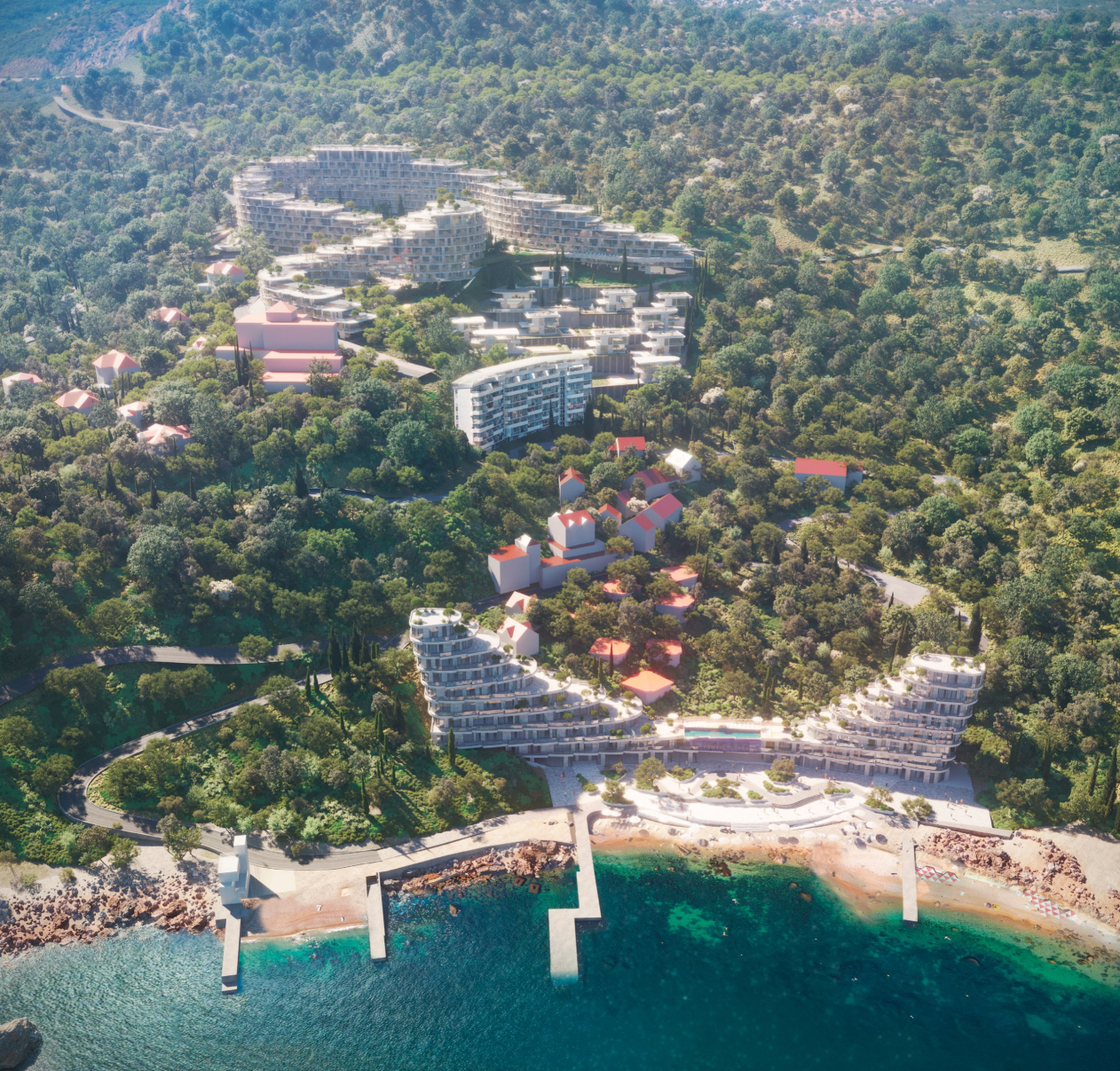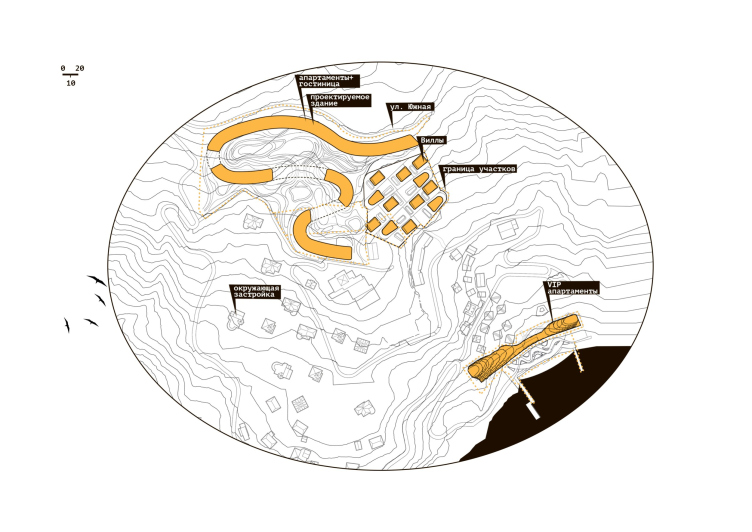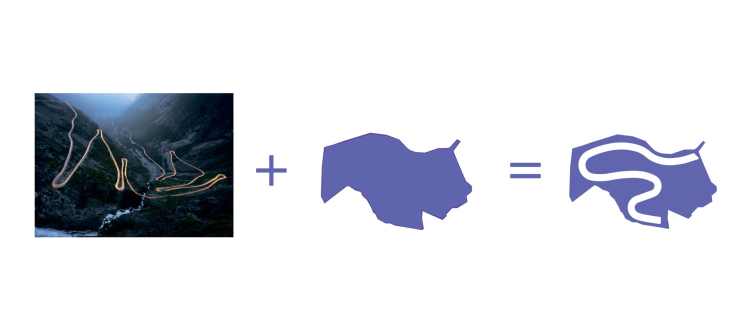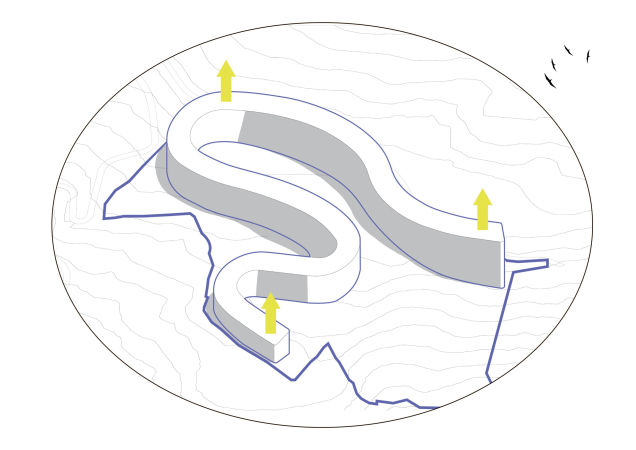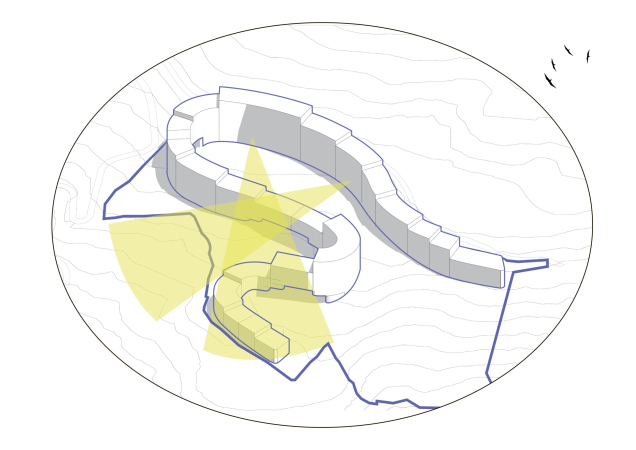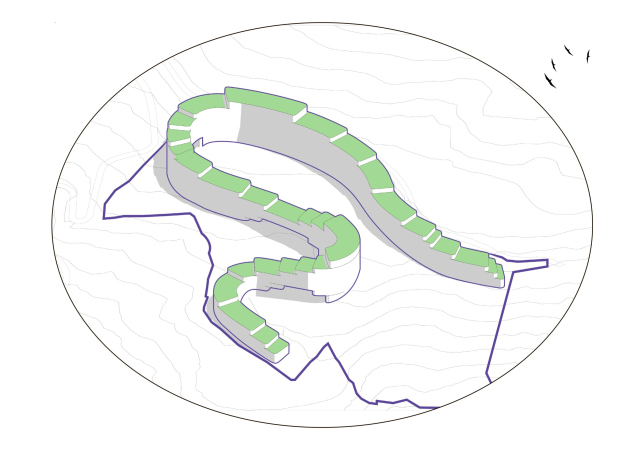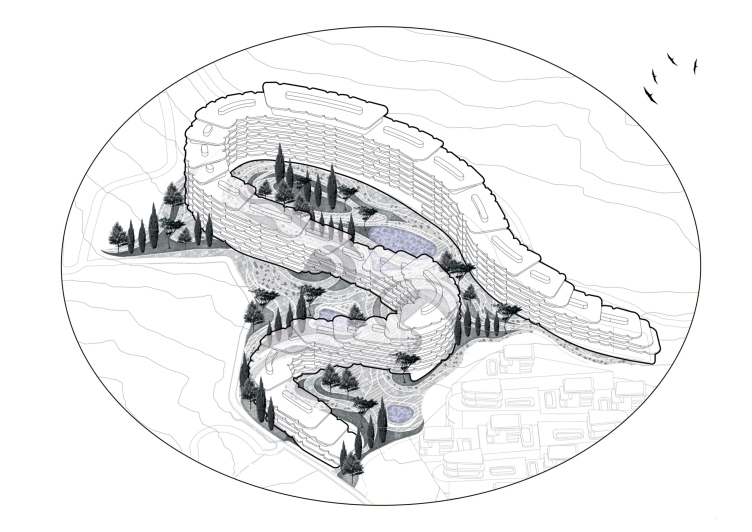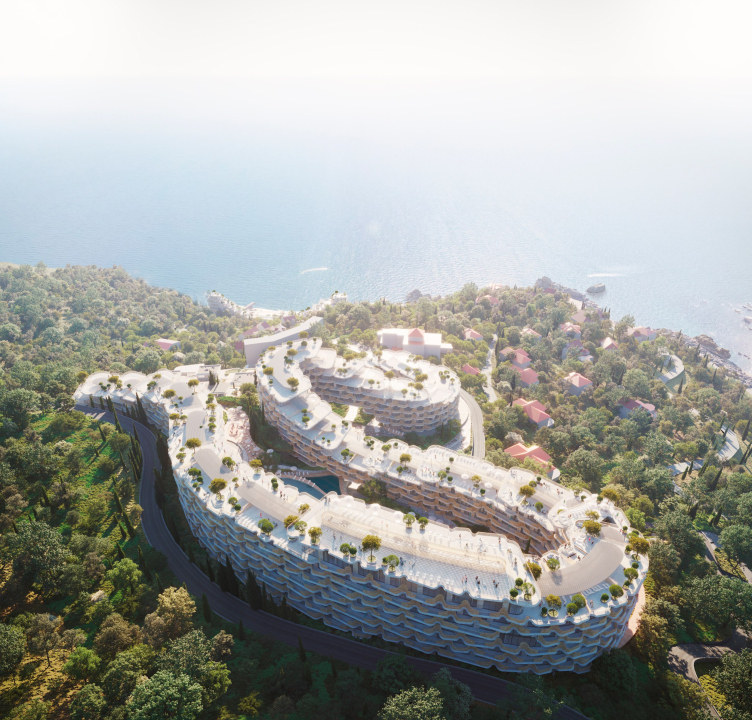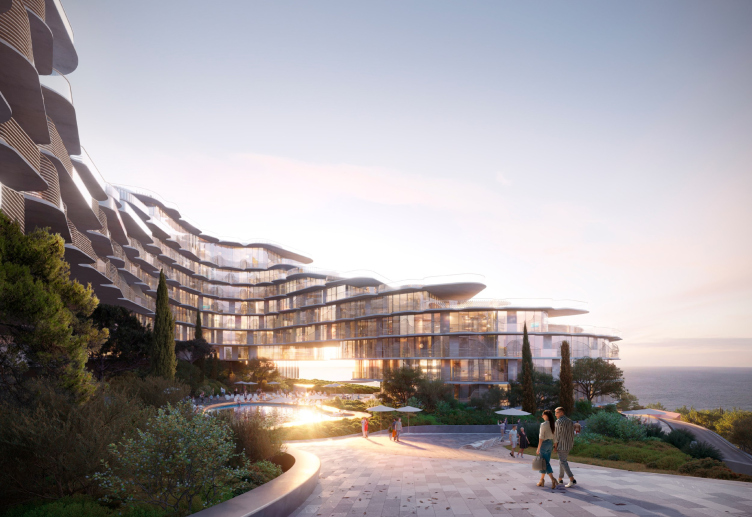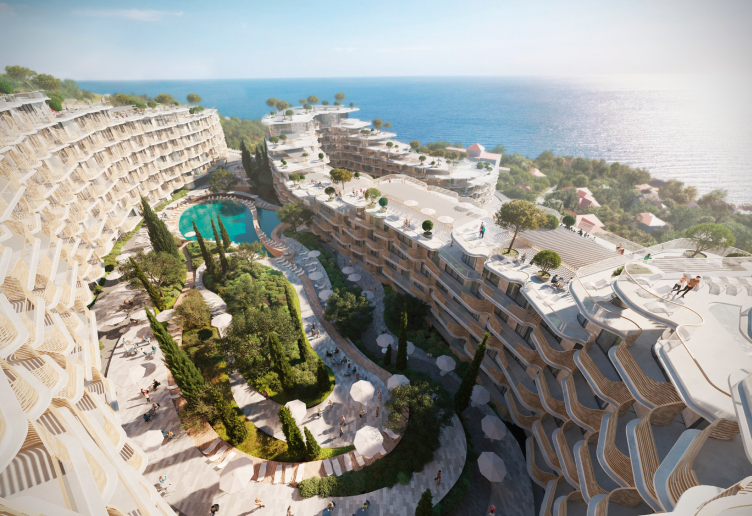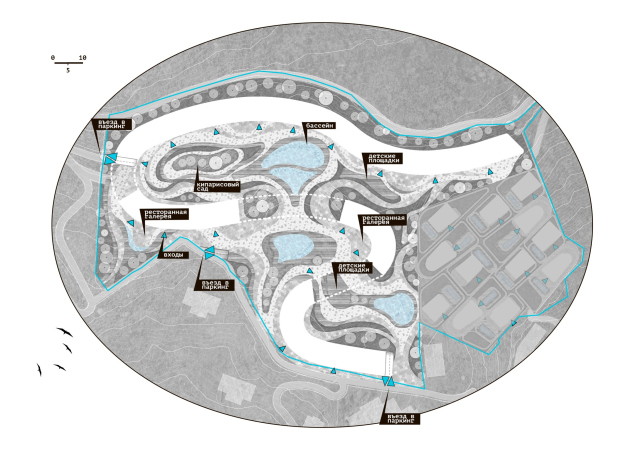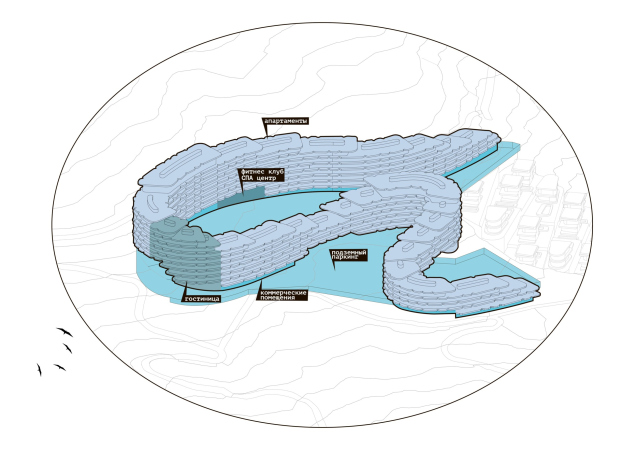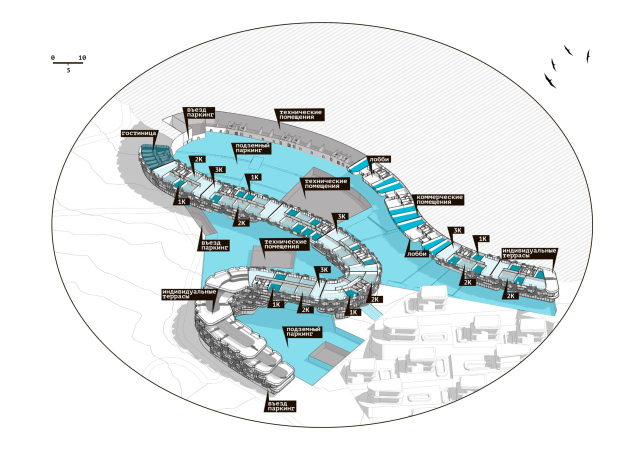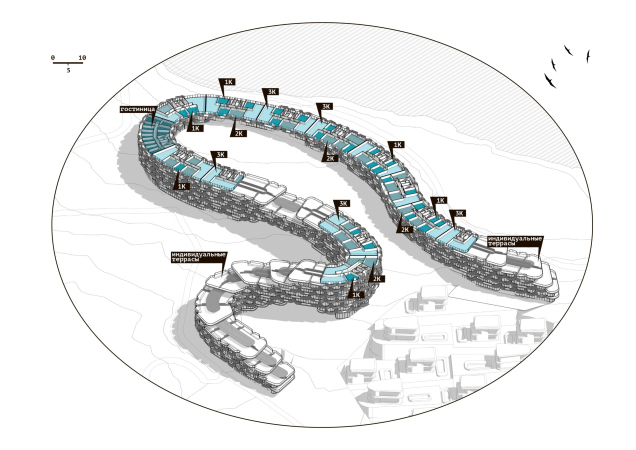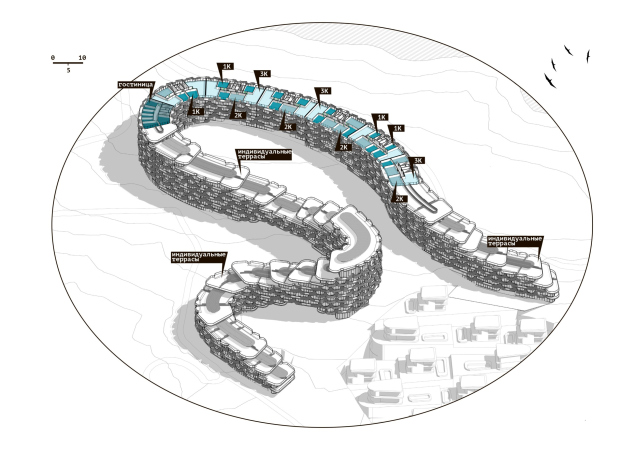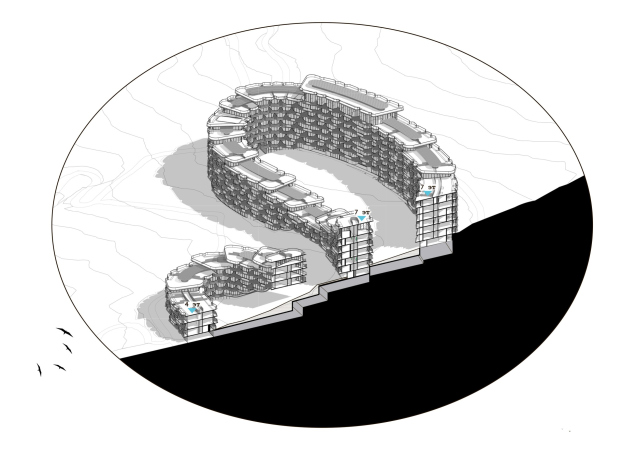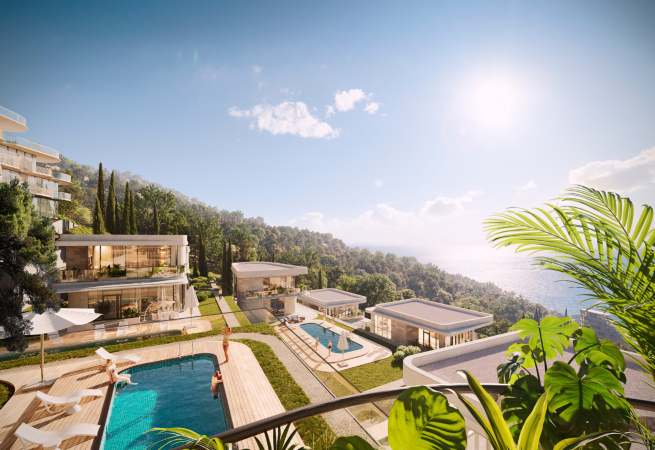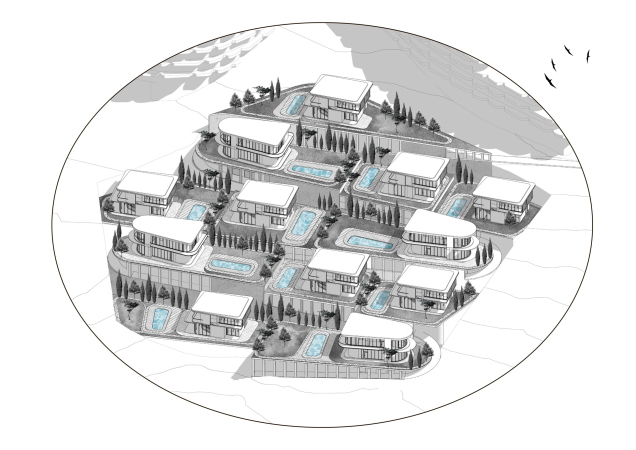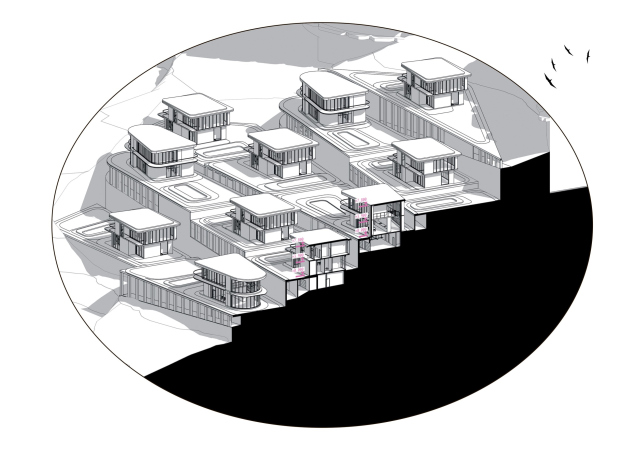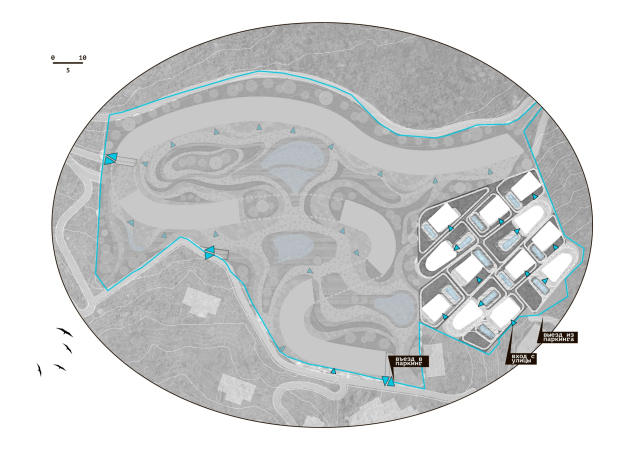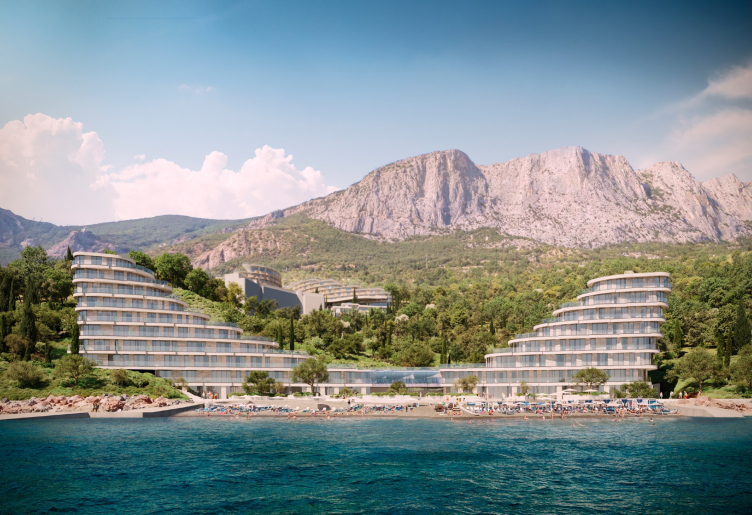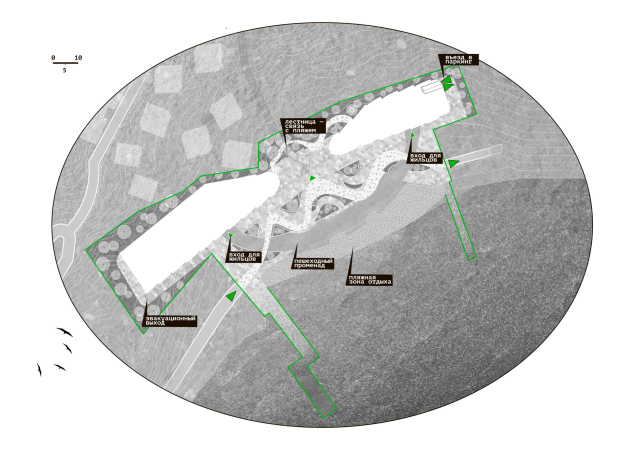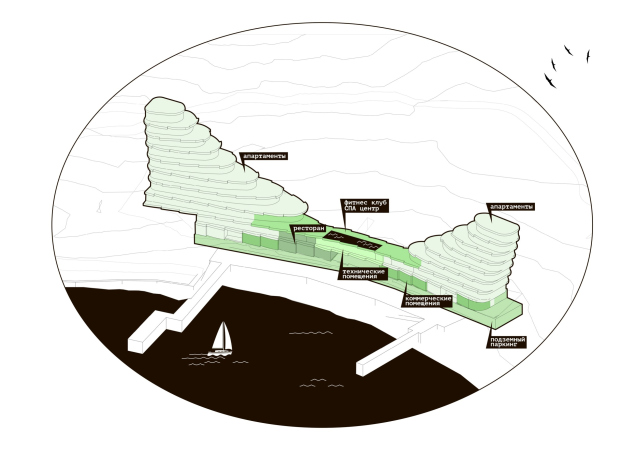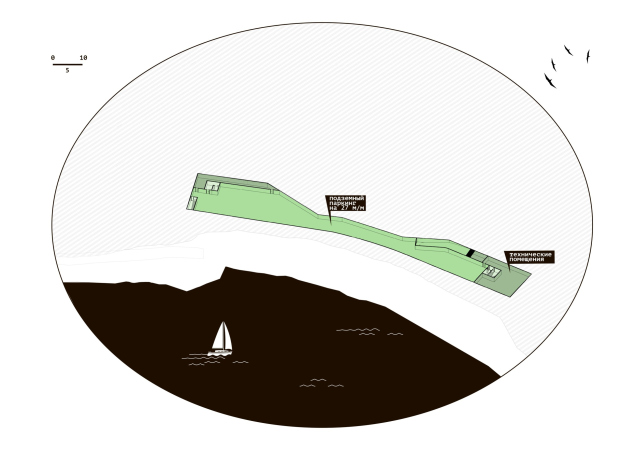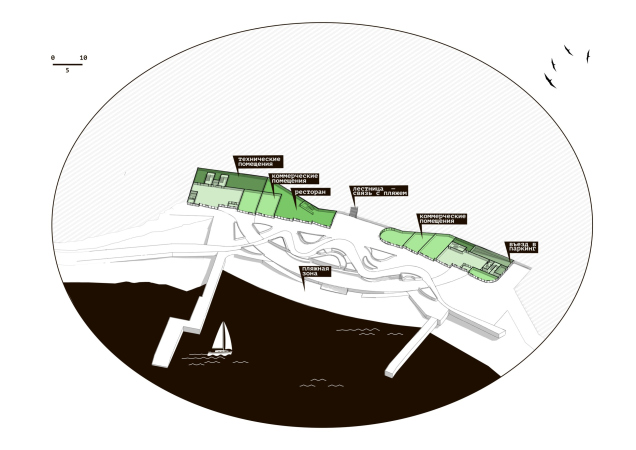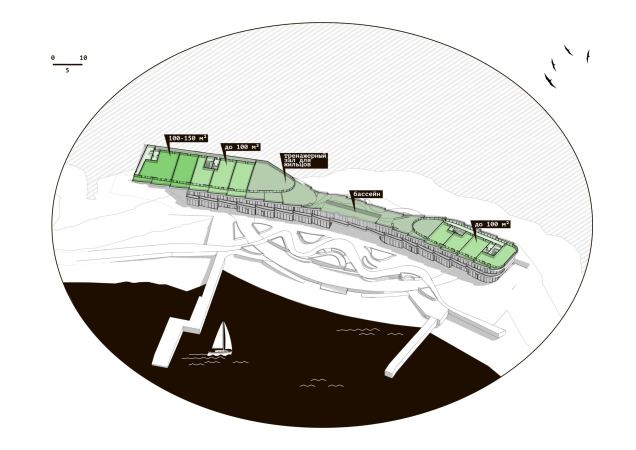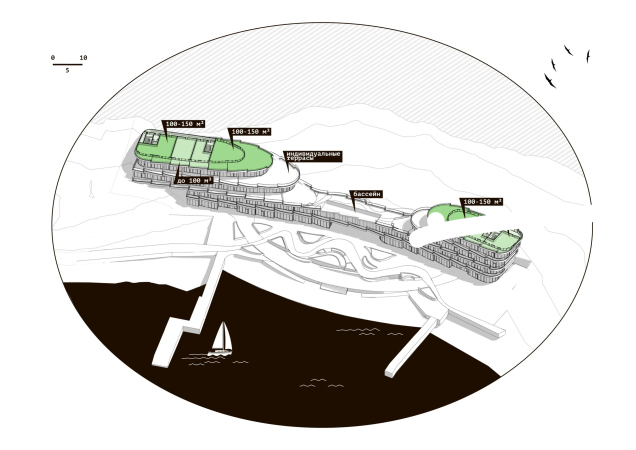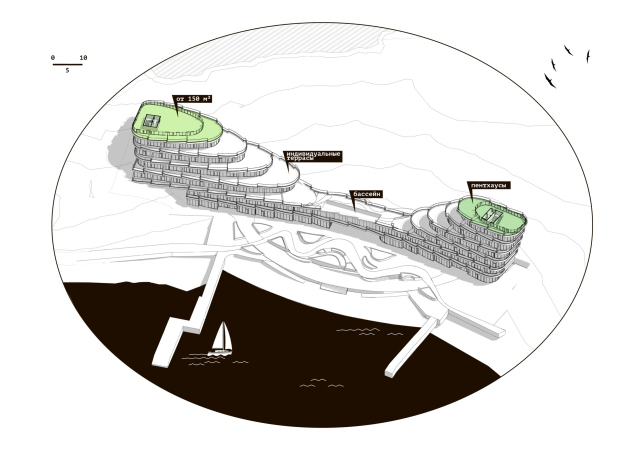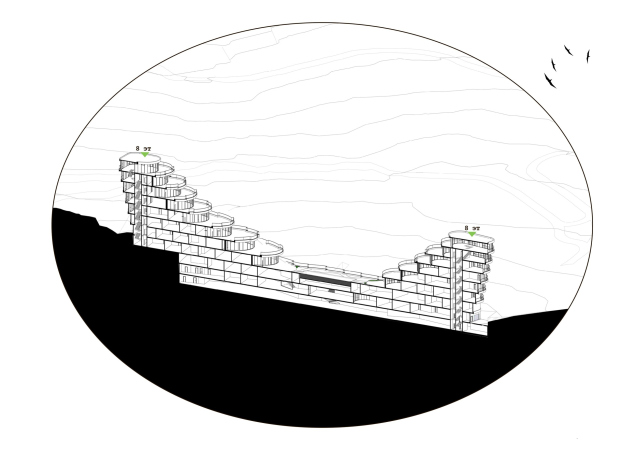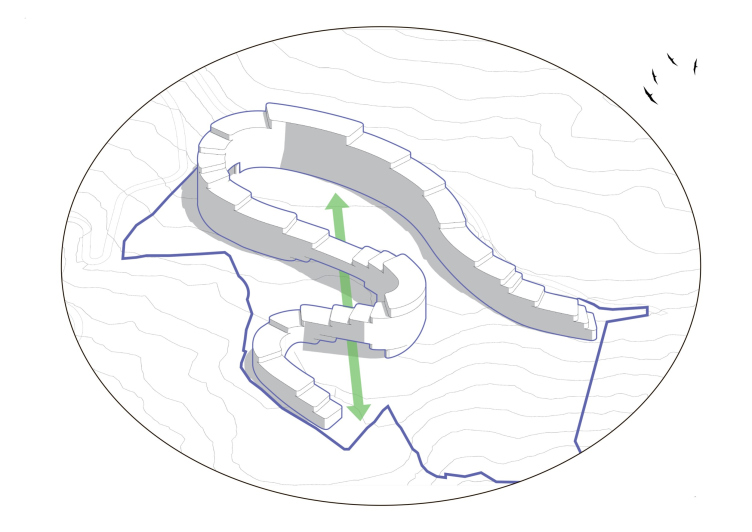However, we have sufficient information about the context of this project. The “Serpentine” complex is planned to be built in Crimea on the outskirts of a well-known seaside resort village, quite typical for the southern coast: it stretches across the slopes of a green strip between the sea and relatively bare mountain ridges. The cape where the complex will appear is situated pretty far away from the classic resort “activities” and therefore looks private and more “local” than touristy. This area is mostly built with mansions featuring red tiled roofs, only disrupted by a seven-story “slab” of apartments. Although the place is quite lively, the infrastructure is somewhat scarce, with houses hidden behind trees, and nature gradually consuming a few unfinished constructions. The attractiveness of the location is evident, as a sleek white villa, designed by an Italian/English architect, stands right by the shore.
Apartment complex on the South Coast of Crimea
Copyright: © KPLN
What makes the project unique is the fact that it is situated on two separate land sites. The smaller one is situated on the first line from the sea, while the larger one is closer to the South Coast Highway. Both territories are former Soviet seaside resort complexes with almost no remnants of their history. The composition of the new complex is diverse, including apartments of different classes, villas, a certain number of hotel rooms, and accompanying infrastructure that would allow owners and tenants to access all services without leaving the cape.
Apartment complex on the South Coast of Crimea. The location plan
Copyright: © KPLN
At the core of the concept proposed by KPLN architects lies the idea of a mountain serpentine: terraced buildings cascade down from the mountains to the sea, with each point and turn revealing a new view.
Apartment complex on the South Coast of Crimea. The idea
Copyright: © KPLN
The “Snake” Mountain
The “serpentine” concept is most prominently developed in the apartment building. In this plot, the architects “lay down” the road like a ribbon, adapting it to the terrain on one hand and gaining sufficient construction volume on the other. This allowed the architects to effectively manipulate the silhouette: the turns of the road accentuate the taller sections, with the floor levels decreasing towards the edges of the plot, ensuring everyone can enjoy the mountain and sea views.
Achieving a sufficiently fragmented division into sections, the architects then soften the effect, articulating horizontal divisions in the buildings. As a result, the observer sees not so much sections as layers, which look like plates of limestone deposits or exposed sinkhole formations. At the bottom of the building, there are four layers, while the highest one has eight. The similarity to a wind-blown mountain, where swallows can comfortably nest in the crevices, is enhanced by the notched outline of terraces and balconies.
Apartment complex on the South Coast of Crimea. Forming the extra plastique of the facades
Copyright: © KPLN
The “scales” of overlapping terraces, the convergence of “rings”, the flat “head” and “tail”, as well as the building’s thickening towards the center – all contribute to the building’s resemblance to a snake, basking in the sun after a successful hunt, eventually turning into stone – much like a cat or a bear. This analogy is indicated by the “Serpentine” name of the complex. Continuing the search for analogies, one can also point to a reference to the Genoese fortress in Sudak, with its serrated walls and towers obediently following the vagaries of the terrain.
Apartment complex on the South Coast of Crimea
Copyright: © KPLN
For the façade finishes, the architects propose using materials that would bring the building closer to the surrounding nature: travertine or glass-fiber-reinforced concrete with relief milling, wooden slats, and triple-layered glass for the balcony railings.
Apartment complex on the South Coast of Crimea. A facade fragment. Version 1
Copyright: © KPLN
The curves of the building form a private courtyard and two cozy squares. These spaces are intended for children’s playgrounds, restaurant terraces, swimming pools, promenades, and gardens for relaxation and sunbathing.
Apartment complex on the South Coast of Crimea
Copyright: © KPLN
Apartment complex on the South Coast of Crimea
Copyright: © KPLN
The contour of the first floor will mainly house technical and commercial premises; smaller sections are allocated for a fitness center and a hotel block. In total, “Serpentine” will comprise approximately 900 apartments ranging from 35 to 100 square meters. Those on the upper floors have access to a rooftop terrace. An underground parking garage for 182 cars is provided.
The Water Cascades
Not only serpentine roads descend from the mountains, but also streams that carve their winding path. This imagery aligns more with the concept of twelve villas situated on the same plot as the apartments, but lower down the slope, standing closely together. The pronounced relief allows for sufficient privacy: each “terrace” accommodates from one to three villas, separated by swimming pools. All villas are organized similarly, comprising two above-ground floors and one underground floor with a parking garage, but some boast a larger area – up to 400 m2. The finishing materials are the same as those used in the apartment building.
The Rolling Waves
The architects place the hotel building right at the water’s edge, promising guests exceptional views of the sea expanse. It is constructed from the same structural units as the apartments: terraces and layers, uneven edges of terraces, travertine, wood, and stucco. However, the imagery for this building is entirely different: it resembles parting waters rather than rocky soil. The space between the two structures leaves the mountain panorama from the sea side open – significant for both those bathing in the sea and the swimming pool and for the passing ships.
Apartment complex on the South Coast of Crimea
Copyright: © KPLN
The two buildings feature a total of 44 apartments, starting from 100 m2 and larger. They are connected by a stylobate with a restaurant, a fitness center, a swimming pool, and shops. The high-class real estate necessitates an underground parking for 27 cars. In front of the building, a promenade and square with spaces for relaxation and contemplation of the sea are planned.
The Forest Trails
Considering the significant distance between the two plots, the architects have also wisely designed connections between different parts of the complex and laid pedestrian routes to the sea. Arches, passageways, galleries, cantilevers, and stairs unite the landscaped environment and make it much more transparent. The main entrance and access to the complex are located closer from the side of the highway.
Apartment complex on the South Coast of Crimea. THe transparency of the courtyards. Access to the sea
Copyright: © KPLN

